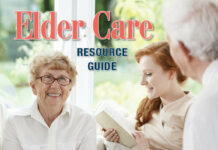WASHINTON, DC —
The pool of family and friends to care for Baby Boomers as they age into their 80s will be less than half as deep as it is today, according to a new report from AARP. The report predicts the ratio of potential family caregivers to elders needing care will plummet from today’s seven caregivers for each person over age 80 to fewer than three caregivers per elderly person in 2050. “The Aging of the Baby Boom and the Growing Care Gap” from the AARP Public Policy Institute also anticipates that the dearth of family caregivers projected for 2030 to 2050 will intensify the emotional, physical and financial costs borne by future caregiving family members and friends.
“More than two-thirds of Americans believe they will be able to rely on their families to meet their needs when they need long term care,” said Lynn Feinberg, AARP Senior Policy Analyst and one of the report’s authors, “but this confidence is likely to deflate when it collides with the dramatically shrinking availability of family caregivers in the future.”
“As the number of people over the age of 80 increases in the next 20 years, the number of people in the primary caregiving years will remain flat,” the report states. Meanwhile, in 2050, there will be three times as many people age 80 and older as there are today. As a result, by 2050, the caregiver support ratio which was 7.2 in 2010 when Boomers were in their peak caregiving years, is projected to drop to 2.9 percent when the boomers will have reached their eighties. According to the report, “In just 13 years, as the Baby Boomers age into their 80’s, the decline in the caregiver support ratio will shift from a slow decline to a free fall.”
The caregiver support ratio in each of the 50 states and District of Columbia is also expected to experience declines similar to the national trend. “Rapidly increasing numbers of people in advanced old age and shrinking families to provide support to them demands new solutions to financing and delivering long term services and supports,” said Feinberg.
”The Aging of the Baby Boom and the Growing Care Gap” calculates the availability of caregivers by dividing the number of people in the most common caregiving age range (those ages 45-64) by the number of older people most at risk of needing long term services and supports (those ages 80+). The former group reflects the demographics of today’s average caregivers, the latter is the population likely to have some kind of disability and need help with daily activities.
The complete report, “The Aging of the Baby Boom and the Growing Care Gap: A Look at Future Declines in the Availability of Family Caregivers,” can be found at http://www.aarp.org/home-family/caregiving/info-08-2013/the-aging-of-the-baby-boom-and-the-growing-care-gap-AARP-ppi-ltc.html












